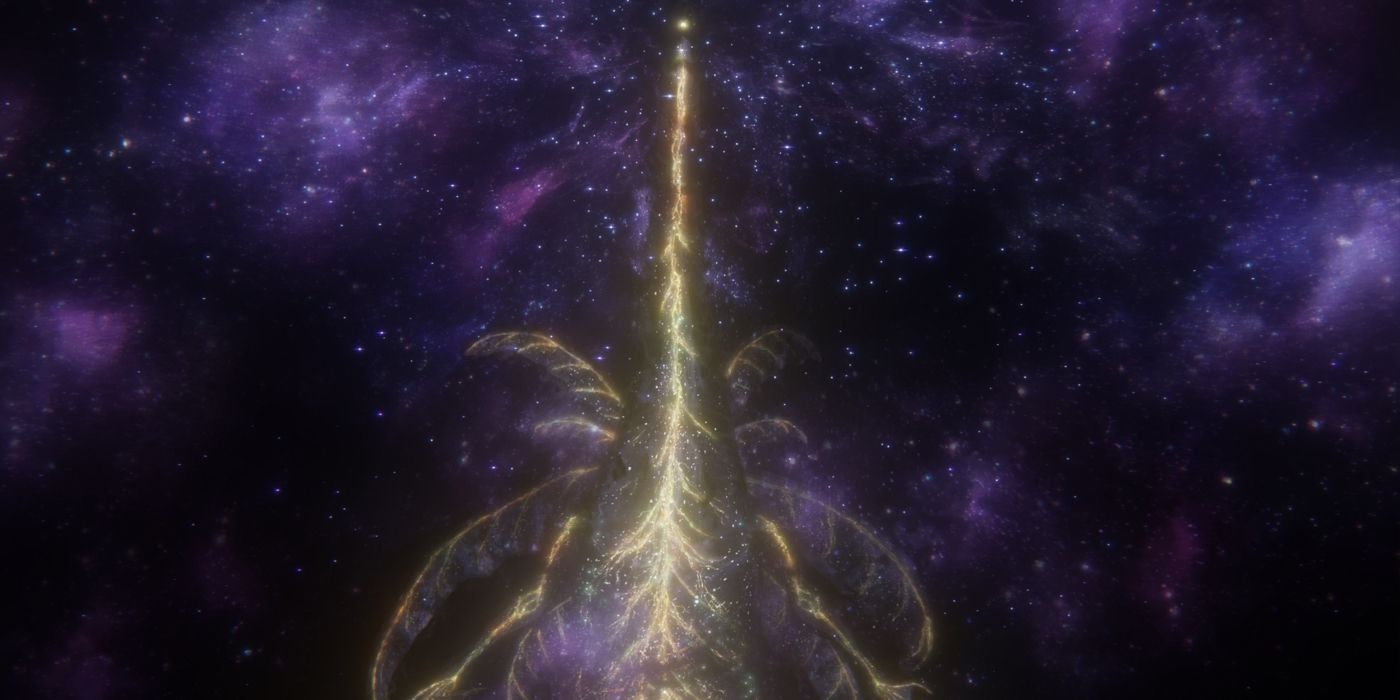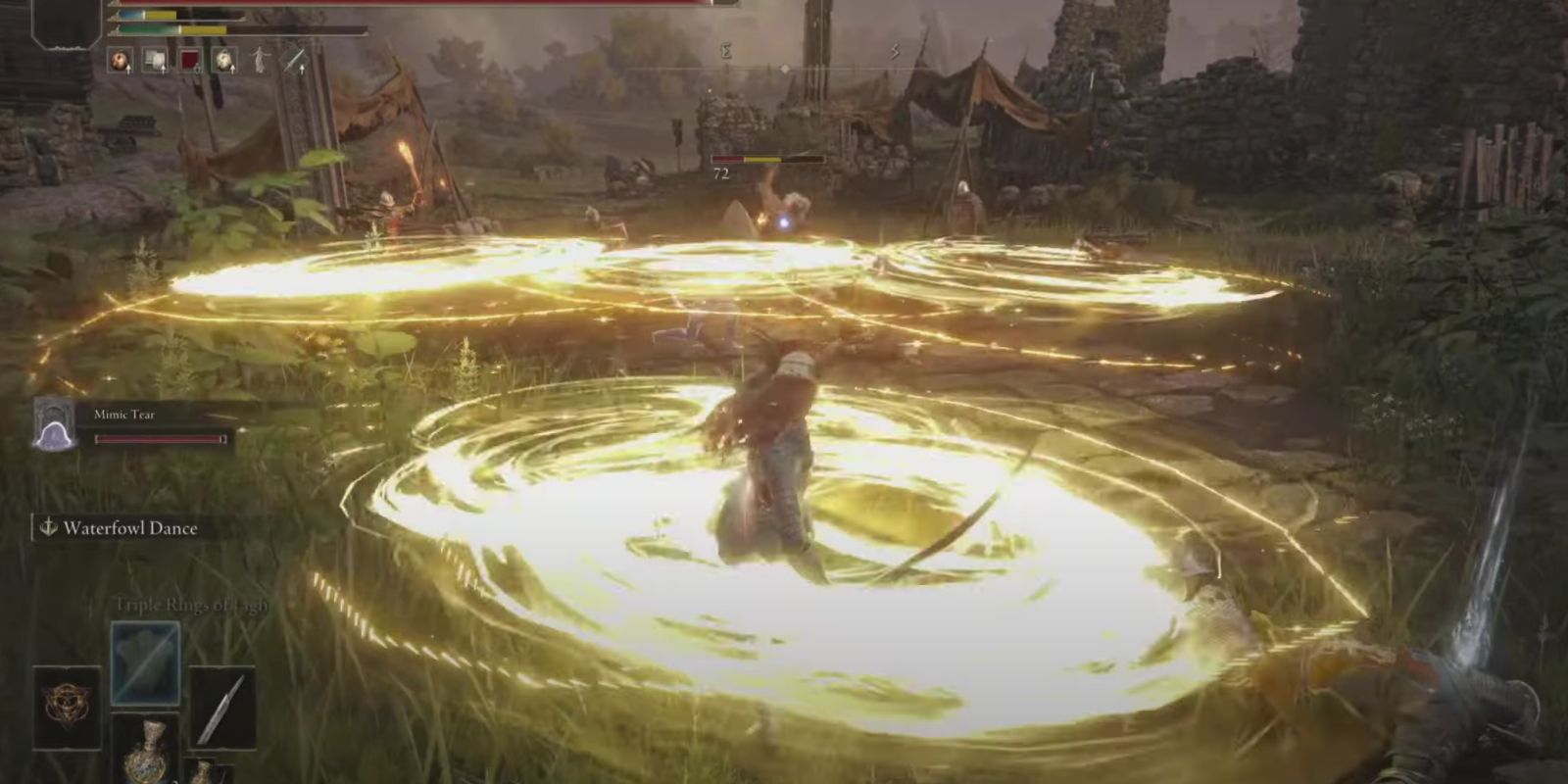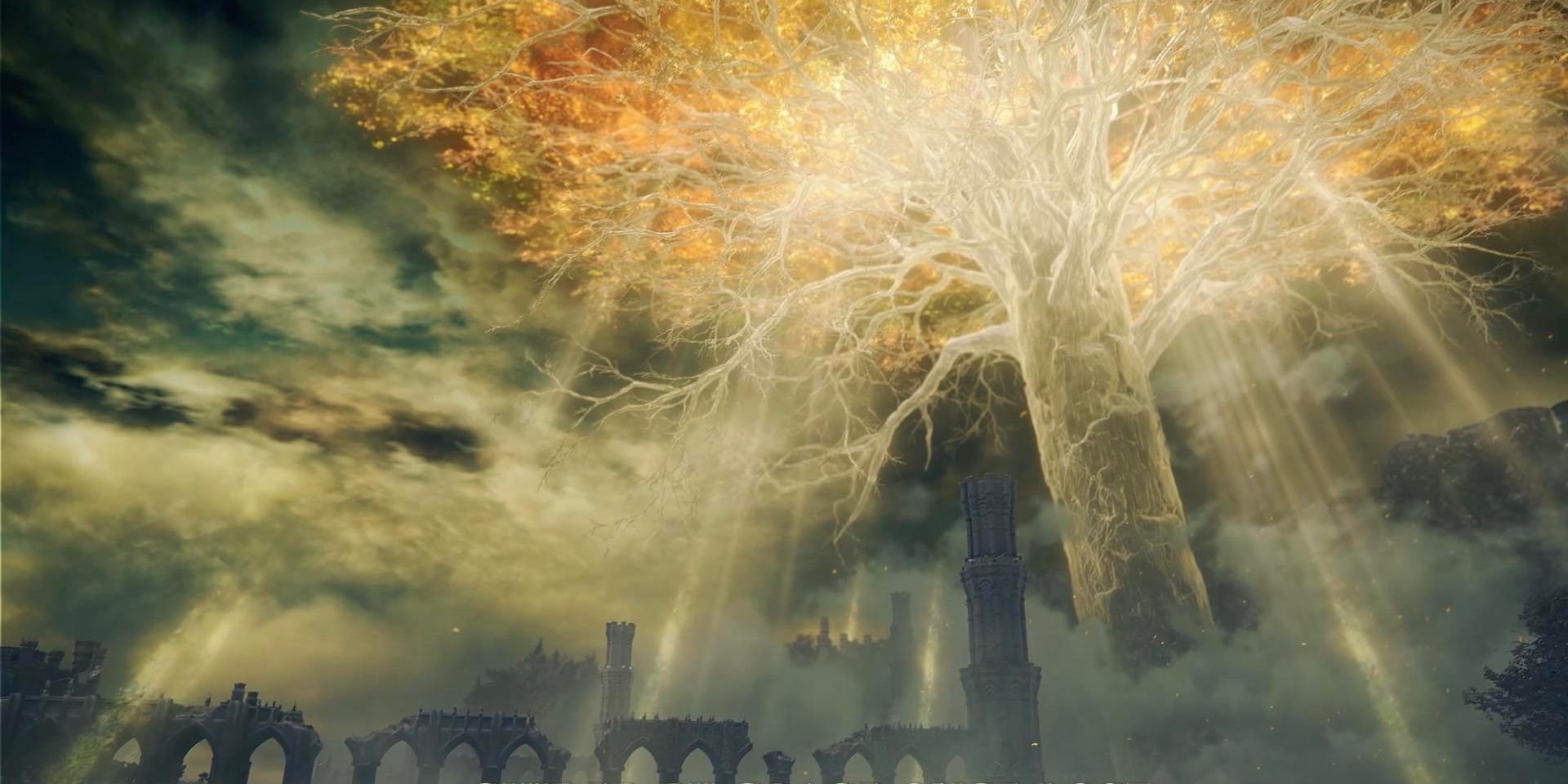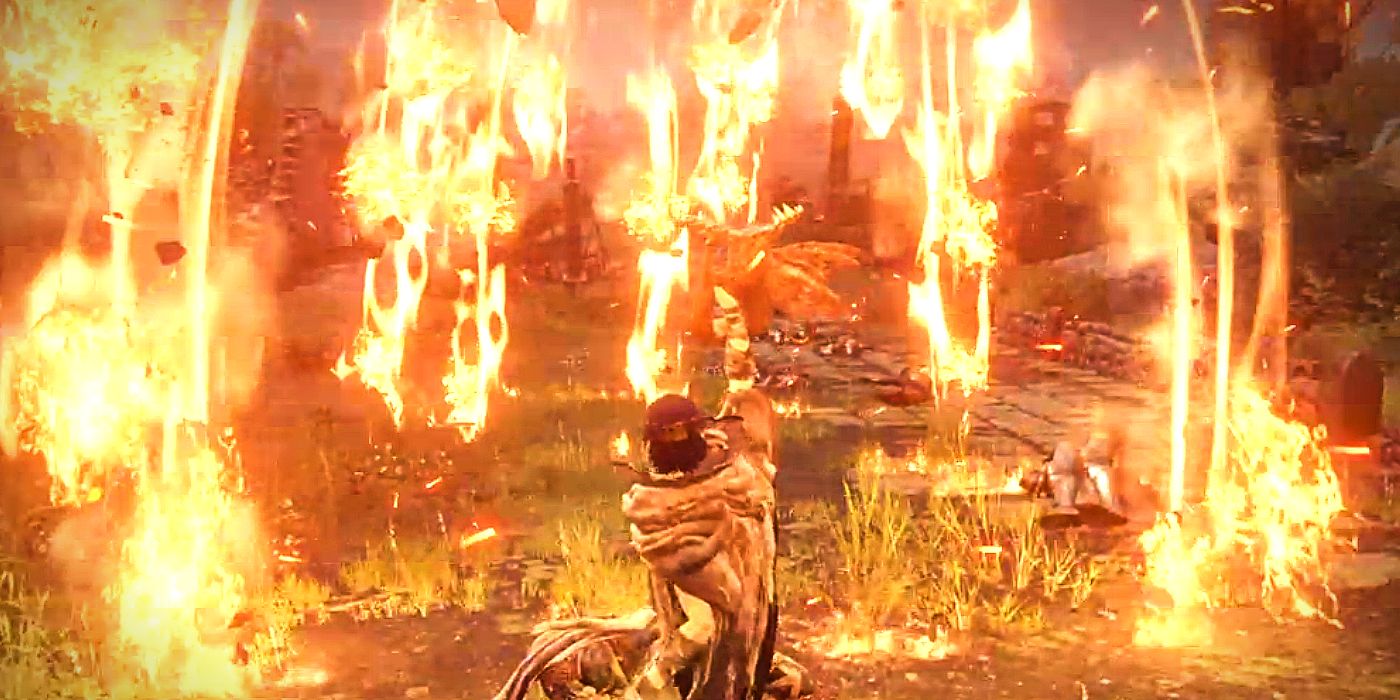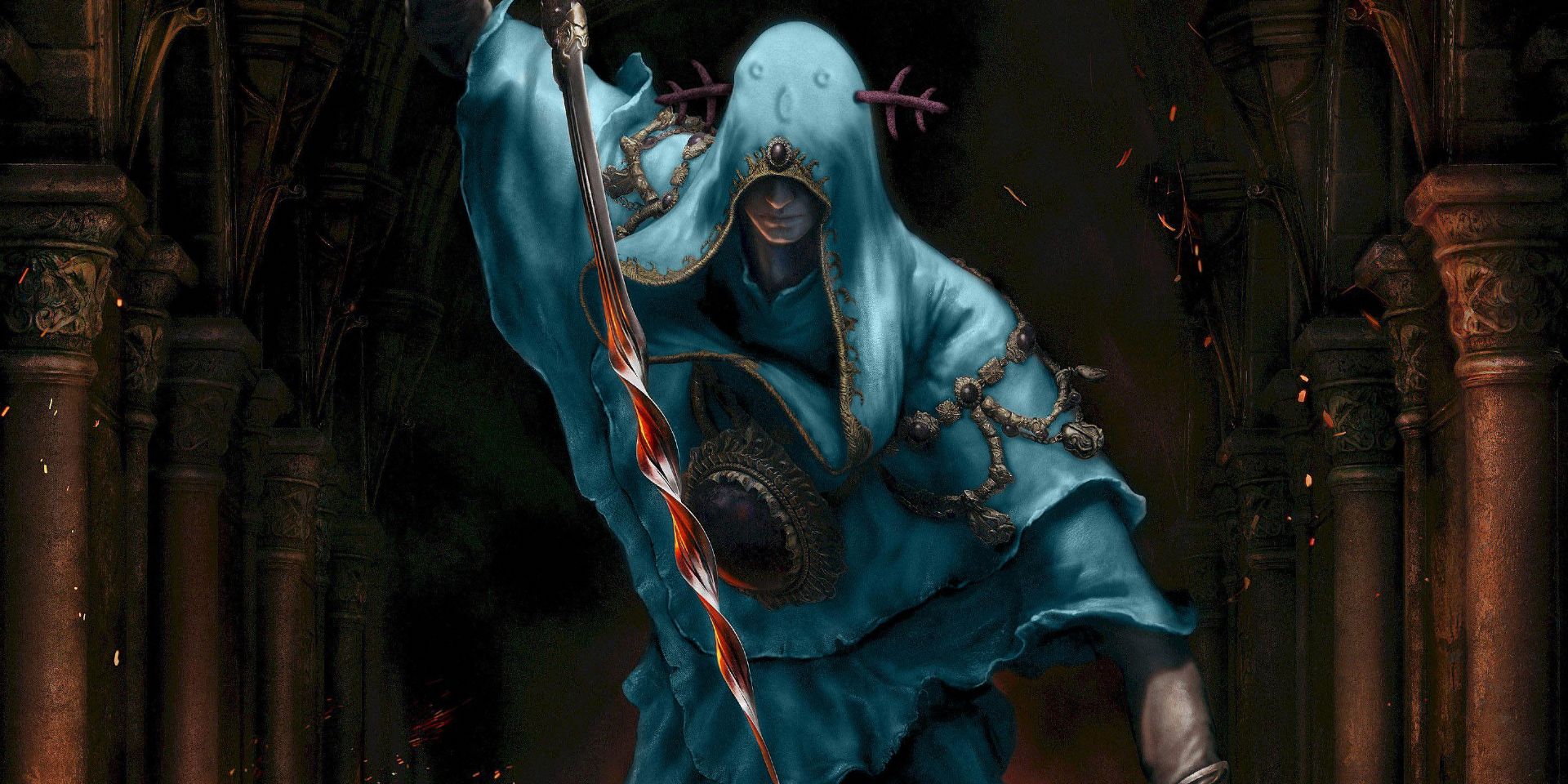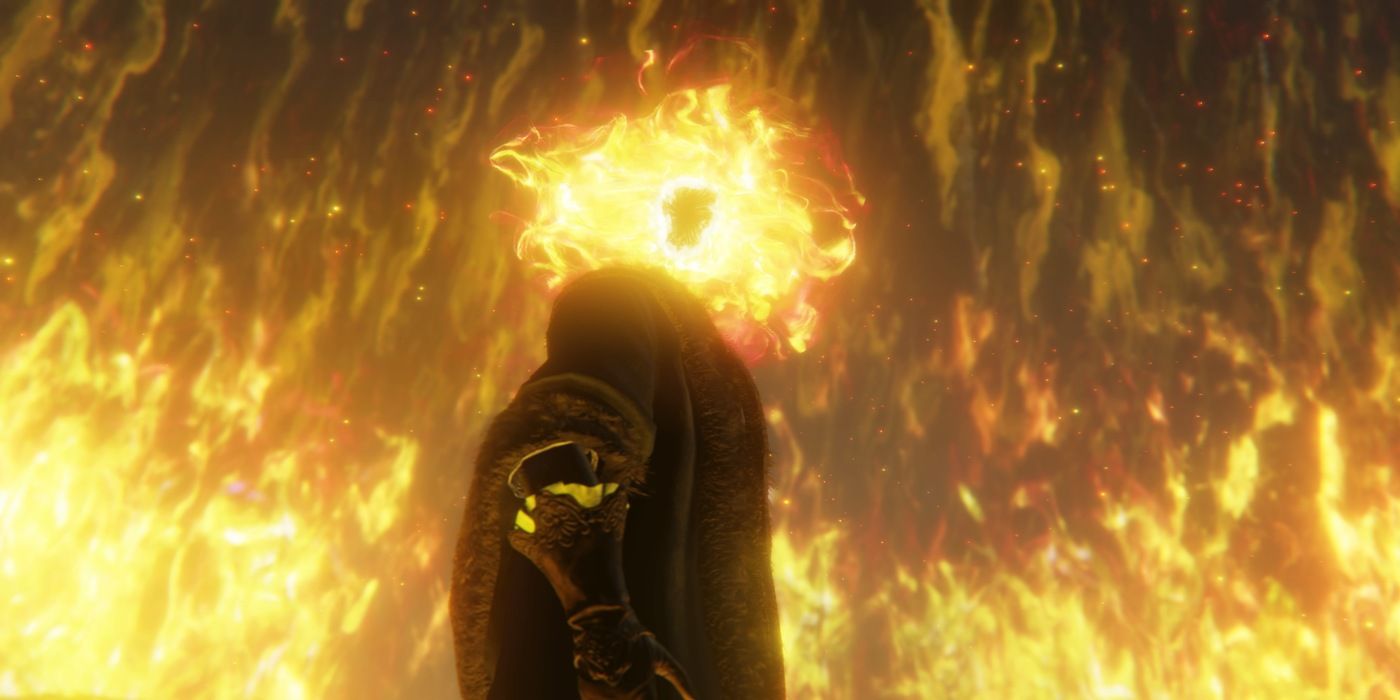Though the incantations of Elden Ring can seem random, they actually have detailed histories that explain how they came to be. As the Faith-based magic system of the Lands Between, incantations derive their power from the Outer Gods and other religious entities. Consequently, the incantations are at odds with one another and are ensconced in stigma.
[Warning: The following article contains spoilers for Elden Ring.]
This is not the story for all incantations, however. Because the Greater Will holds the most influence over the Lands Between, the magic associated with it and its creations is among the most used and powerful in Elden Ring. Schools of magic that find their source in the other Elden Ring deities like the Scarlet Rot Goddess or Formless Mother are conversely reviled, namely because the Greater Will deems them evil.
Because of the association between the incantations and the Outer Gods, the histories behind them may appear to be a part of the Outer Gods' pasts. However, when examined more closely, different incantations contain specific stories within them that make each of them unique. To chronicle these stories, here is a list of the types of incantations of Elden Ring and their origin stories.
The Greater Will Empowers The Golden Order & Two Fingers Incantations In Elden Ring
The Greater Will has its message translated and spread by the Two Fingers and Golden Order, respectively. The Two Fingers facilitate communication between the inhabitants of the Lands Between and the Greater Will in Elden Ring, while the Golden Order upholds the tenets of the Greater Will's philosophy by hunting Those Who Live In Death. As such, those who serve the Two Fingers and Golden Order have access to incantations that derive their power from the Greater Will.
The incantations of the Two Fingers mostly deal with healing, curing, and fortification. This is because many of the servants of the Two Fingers are Finger Maidens, who serve as assistants to Tarnished and thus use magic to tend to their Tarnished's needs. However, some incantations like Darkness and Assassin's Approach highlight that the Two Fingers do make use of hitmen in Roundtable Hold to hunt down enemies that stand against the Greater Will.
The Golden Order incantations of Elden Ring both protect its members while also being literal declarations of the Order's faith. Many of the spells are its fundamental rules, like Law of Regression and Law of Causality. However, some other spells like Radagon's Rings of Light highlight that some of the institution's spells are solely offensive and unrelated to its philosophy (although this spell was created by Miquella and not the Greater Will).
The Erdtree Incantations Chronicle Elden Ring's Past
The Erdtree functions much like a parasite in Elden Ring, absorbing the souls of those who pass in the Lands Between as remembrances. Consequently, incantations that gain their power from the Erdtree are various and provide a history of the game's world. Indeed, many of the Erdtree incantations are related to the Crucible, which was the primordial soup from which the world of Elden Ring was born. There are also the incantations that are absorbed from the Tarnished's defeated enemies, like Maliketh's Black Blade.
However, most of the Erdtree incantations function in a similar way to those of the Two Fingers and Golden Order in Elden Ring. There are fortification spells like Golden Lighting Fortification, healing incantations like Blessing's Boon, and others that serve as translations of the Greater Wills philosophy like the Golden Vow. What differentiates these spells is that they derive their power from the Erdtree and are used more by inhabitants of the Royal Capital Lyndell.
Fire Monks And Fire Giants Tend A Forbidden Flame In Elden Ring
The Fire Giants of Elden Ring lore were not always Fire Giants. They were originally just giants until Marika and Godfrey defeated the Fire Giants before Elden Ring's main story, exiled them to the Mountaintops, and forced them to tend to the flame of a fell god for all of eternity. The reason for this specific punishment is fitting because, according to the Fire Giants' spells, they tried to harness the power of this god in their battle with Marika in their own bodies. In doing so, they created the Fire Giant incantations and continue to hold the flame of this god in Elden Ring.
The Fire Monks, whether fellow exiles in the Mountaintops or willful followers of the fell god, battled alongside Fire Giants in their war against Marika. In the process, they became obsessed with the flame of this fell god. Having gotten more control of the flame, they developed the Fire Monk incantations that derive their power from the same source as the Fire Giants in Elden Ring.
As a consequence of their stronger control of the flame, the Fire Monk incantations resemble those of the Two Fingers and Golden Order. However, what is notable about these incantations is that they defeat effects from Outer Gods like Scarlet Rot and the Golden Order. Spells like Flame, Cleanse Me explain that the fire of the fell god causes fear in the Outer Gods, which is what allows it to have this effect.
The Incantations Of The Dragon Cult And Communion In Elden Ring
There are two schools of Faith-based magic that derive their power from dragons: Dragon Cult incantations and Dragon Communion incantations. The former group was led by Godwyn the Golden before his death. After defeating the ancient dragon Fortissax, Godwyn befriended the beast and gave rise to the Ancient Dragon Cult of Elden Ring's capital city. In return for their worship, the dragons granted the cult's members the ability to yield the red lightning of the ancient dragons; if the dragons had not given the cult's members permission, simply using Dragon Cult incantations would destroy their bodies.
The Dragon Communion had a much different relationship with dragons, on the other hand. Rather than build a relationship on love and admiration, the Dragon Communion hunted dragons to devour their hearts. Doing so would grant them the power of the dragons they killed. But this comes at a cost: The more dragon flesh the Dragon Communion devoured, the more they turned into dragons. This is why Dragon Communion incantations in Elden Ring see the Tarnished morph into the head of a dragon to spew its breath or roar.
Bestial And Godskin Apostle Incantations Are Connected In Elden Ring
The incantations of Elden Ring's Godskin Apostles find their power in two sources: Death and the Gloam-Eyed Queen. The Gloam-Eyed Queen was said to be "an Empyrean chosen by the Fingers" who then granted the Godskin Apostles access to Faith-based magic related to Death. Although there are sorceries that are also connected to Death, the incantations are more directly tied to the Death Rune and have consequently been weakened since Maliketh sealed the rune for Marika. Nevertheless, these incantations are designed for the slaying of gods, making the Gloam-Eyed Queen feel eerily similar to Elden Ring's one-eyed witch Ranni.
Connected to the magic of the Godskin Apostles is Bestial magic. In Elden Ring, only the Beast Clergyman Gurranq and his militiamen utilize Bestial magic, which is said to have been created by the primitive beings of the Lands Between long before the creation of the Erdtree. Of course, Gurranq is actually Elden Ring's Maliketh the Black Blade, so his ancient Bestial magic has somehow been able to overcome the Death magic of the Godskin Apostles.
The Incantations Of Other Outer Gods In Elden Ring
Finally, there are three schools of Faith-based magic left in Elden Ring, and each of them finds its source in a different Outer God. The first, Blood magic, derives its power from the Formless Mother. Many of the Blood incantations require the caster to literally obtain blood from the Formless Mother's body via magic to then attack opponents with it. Though the Formless Mother is the source of power for these incantations, it is Mogh the Lord of Blood who discovered them and enables his servants to use them.
The second is the magic of Elden Ring's Frenzied Flame. The Outer God of the Frenzied Flame is the antithesis of the Greater Will: where the latter represents order, the former represents chaos. Consequently, the incantations of the Frenzied Flame cause destruction and drive both their users and victims mad. The Frenzied Flame is so powerful that it can destroy the entire world of Elden Ring and return it to the Crucible it once was, which is the ultimate goal of its Outer God.
The third and last are the incantations of the Servants of Rot. These servants serve the Rot Goddess who was sealed away beneath the Lands Between by a blind swordsman long ago. Malenia likely becomes Elden Ring's Rot Goddess after the Tarnished defeats her, and the Servants of Rot thus worship her. Because the Scarlet Rot is akin to poison and disease, its spells inflict poison and rot damage and can even resemble the bugs who worship the Rot Goddess.
The incantations of Elden Ring are many in number, varied in purpose, and complex in nature. A Golden Order member may use his magic for evil purposes, while a Fire Monk may use the forbidden flame to heal herself from disease. Such intricacies in Elden Ring's incantations make the Lands Between feel that much more real and textured.

